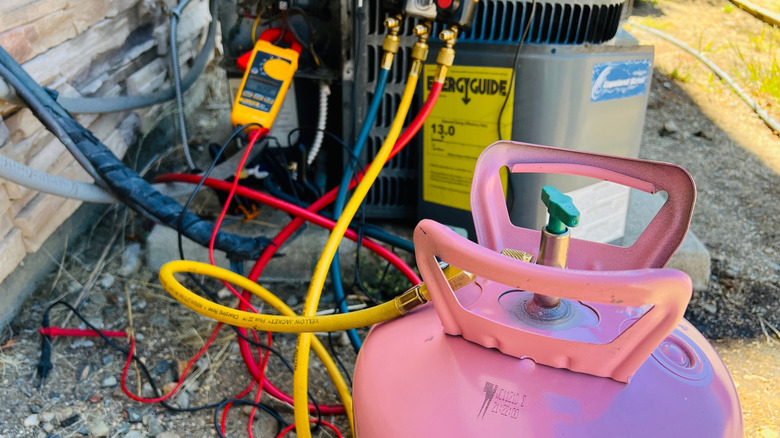Why Are AC Repairs And Replacements Getting So Expensive?
Ideally, your air conditioner will last at least as long as the expected lifespan of 15 to 20 years — and maybe longer. However, no matter how carefully you maintain and care for the cooling system, it will eventually break down. If you haven't had to call a licensed HVAC technician for repairs or a replacement unit for several years, you might receive some sticker shock when you see the bill or cost estimate. AC repairs and replacements have become considerably more expensive over the past few years because of multiple reasons, including a shortage of raw materials for replacement units and parts, labor shortages, changes in federal regulations, and broader market inflation.
From the start of the COVID pandemic in 2020 to 2025, the average cost of HVAC systems has increased from about $6,000 to $12,000. Some HVAC companies estimate the price for a replacement AC unit jumped 30% to 40% from 2024 to 2025 alone. This significant increase in price can make it difficult to pick the right AC unit for your home. Although it can be tempting to buy a smaller AC to try to save some money, an undersized air conditioner will create higher operational costs, inadequate cooling, and unwanted humidity levels.
Repair costs have increased, too. The average AC repair cost in 2020 ranged from $125 to $2,000, while the average AC repair cost in 2025 ranges from $150 to $3,000. Learn more about the reasons behind these increases in the replacement and repair costs related to cooling systems.
Federal regulations and inflation can explain some of the increases in costs for AC services
Prices for replacement air conditioners are increasing in large part because of new federal energy-efficiency and refrigerant regulations. Starting in 2025, air conditioning manufacturers had to manufacture models that only use the R-454B refrigerant, which is a replacement for R-410A. The R-454B refrigerant is a more eco-friendly material. Federal regulations that took effect at the start of 2023 required AC manufacturers to create units using the SEER2 rating, which improves the AC's energy-efficiency performance. SEER2 might save you some money on energy usage, but it did increase the cost of new AC units that use it.
What do the new coolant requirements mean for existing equipment? Homeowners don't have to retrofit existing systems to match the new regulations, but they'll eventually have to switch to the new regulations when they need to buy new AC systems. Consequently, as the deadline for implementing the new refrigerant and efficiency regulations approached, people rushed to purchase replacement models and make repairs to avoid having to pay more for the products with the new designs. This increased market demand and drove prices higher.
Additionally, inflation and tariffs explain some of the increase in costs. Tariffs may increase the cost of materials used in air conditioning parts manufactured outside the United States by 10% to 30%. Inflation, which reached a 40-year high in the early 2020s, also increased the cost of replacement air conditioning units, repairs, labor, and AC parts.
Shortages in the industry are causing some of the price increases
One of the primary reasons that an AC repair will cost you significantly more money than it did a few years ago is because of a continued scarcity in replacement parts. As with many other industries, the air conditioning industry suffered from a shortage of parts because of manufacturing slowdowns during the COVID pandemic. Even in 2025, backorders and supply chain issues continue.
Raw materials used for air conditioner parts and replacement units are also experiencing shortages. Steel, copper, and aluminum continue to have fluctuations in their availability in the market, which causes volatility in prices. One market segment with shortages that you might not normally associate with HVAC systems is the semiconductor industry. Semiconductors have been in high demand ever since 2020, creating shortages for products related to industries like computing, high-tech, automotive, and televisions. High-efficiency HVAC and air conditioning systems also use semiconductors, which might surprise some people. Semiconductor shortages explain some of the cost increases for AC parts and replacement systems. Shortages in semiconductor supply chains have improved in the past several months compared to 2020, but fluctuations in availability are still occurring.
Finally, higher labor costs for air conditioner installations are driving higher costs for replacement units. The number of HVAC technicians in the market is more than 100,000 lower than what it should be. Labor shortages naturally lead to higher costs for wages paid to the skilled workers that are part of the industry.


